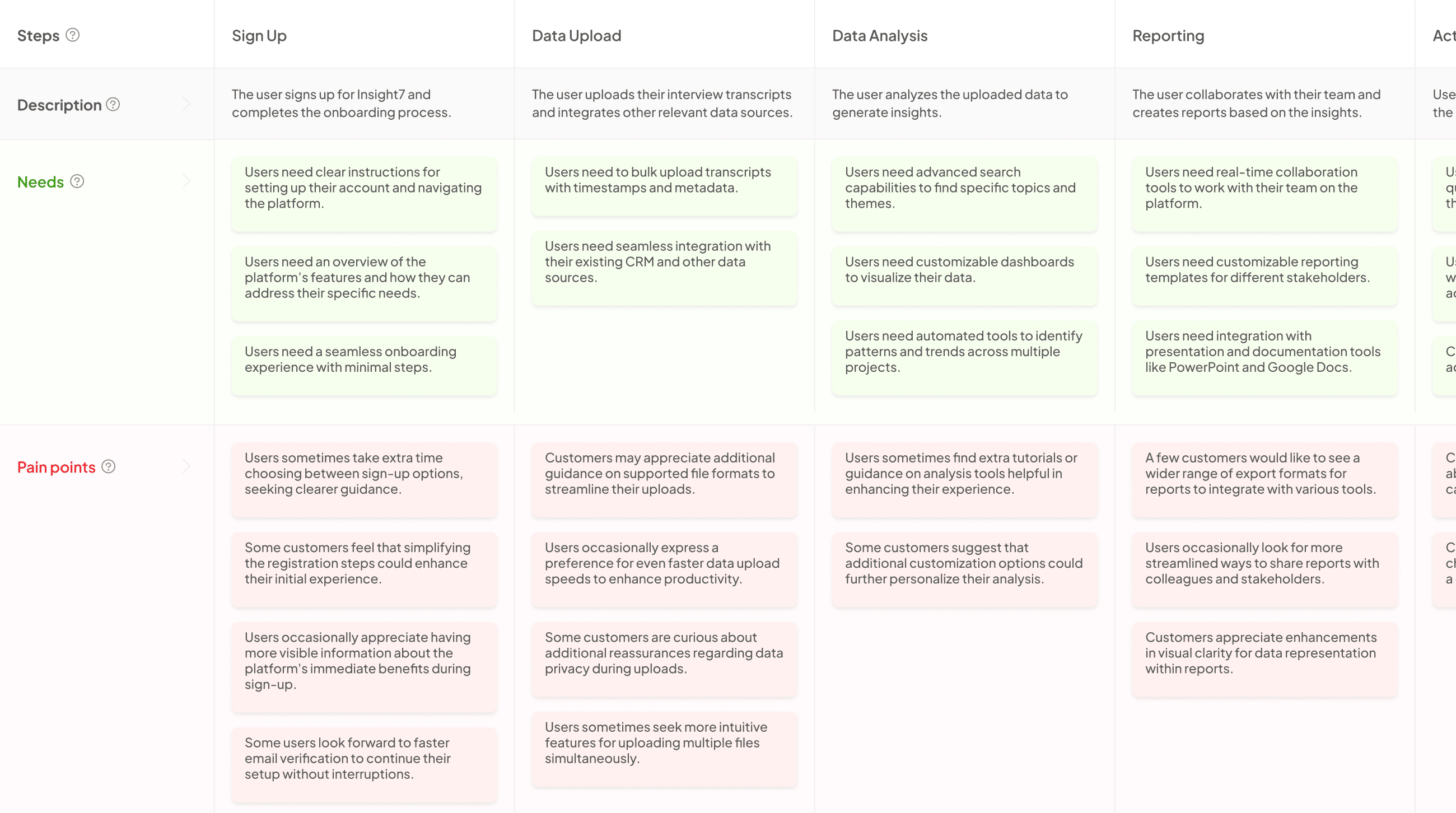Customer Journey Mapping Software Comparison
-
Odun Odubanjo
- 10 min read
In the ever-evolving landscape of customer experience management, the importance of understanding and mapping the customer journey cannot be overstated. Customer Journey Mapping Software has emerged as a pivotal tool for organizations to visualize and analyze the paths customers take from initial awareness to ultimate purchase and beyond. In this exploration, we delve into the comparative aspects of such software, aiming to guide organizations in choosing the right tool to streamline their processes and enhance customer insights.
The crux of any Customer Journey Mapping Software lies in its ability to consolidate data and generate actionable insights almost instantaneously. Traditionally, the process of gathering customer data, analyzing conversations, and identifying trends could span weeks. However, with the advent of cutting-edge software, organizations can now achieve these tasks in near real time, allowing them to respond to customer needs and market shifts with unprecedented agility.
Extract insights from Customer & Employee Interviews. At Scale.

One of the key capabilities of these software solutions is the project dashboard, which offers a panoramic view of customer pain points, desires, and opportunities. It allows users to delve into each theme, examining the sentiment, the goals supported by the insights, and the potential impact of taking action. This level of detail is crucial for decision-makers who require visibility into customer insights to inform strategic choices.
Moreover, the integration of AI research assistants into these platforms is a game-changer. Users can pose questions directly to the AI, such as requesting ideas for solutions to problems highlighted in customer feedback. This interactive feature not only saves time but also fosters a more dynamic and responsive approach to customer relationship management.
Insight7, for instance, is a platform that enables product teams to track product sentiment across a portfolio in real time. This feature provides a comprehensive understanding of what matters most to customers through the analysis of positive and negative feedback across products. The ability to integrate with CRMs and other systems enhances the software’s utility, ensuring that customer feedback is not siloed but rather incorporated into a holistic view of customer interactions.
Generate Journey maps, Mind maps, Bar charts and more from your data in Minutes
Segmentation is another cornerstone of these platforms. With the ability to segment customers by revenue, employee size, industry, and other attributes, teams can tailor their strategies to the unique priorities of different market segments. This targeted approach is invaluable for addressing the specific pain points and desires within each segment.
The importance of a people-first approach in content creation cannot be understated. When evaluating Customer Journey Mapping Software, it is essential to consider how the tool aligns with the principles of Experience, Expertise, Authoritativeness, and Trustworthiness (E-E-A-T). These principles are not only vital for search engine rankings but also for building a trustworthy and authoritative presence in the market.
Conclusion
In conclusion, the right Customer Journey Mapping Software can revolutionize the way organizations understand and cater to their customers. By providing real-time insights, detailed analytics, and AI-assisted interactions, these tools empower teams to make informed decisions, personalize customer experiences, and ultimately drive growth.
Extract insights from Customer & Employee Interviews. At Scale.

As we navigate the complexities of the customer journey, the software that best aligns with an organization’s goals, values, and commitment to customer-centricity will stand out as the most effective choice.







